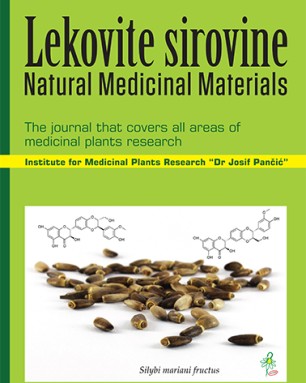Department of Plant Physiology, Institute for Biological Research “Siniša Stankovic”, University of Belgrade , Belgrade , Serbia
Department of Plant Physiology, Institute for Biological Research “Siniša Stankovic”, University of Belgrade , Belgrade , Serbia
Department of Plant Physiology, Institute for Biological Research “Siniša Stankovic”, University of Belgrade , Belgrade , Serbia
Institute for Medicinal Plant Research “Dr. Josif Pančić” , Belgrade , Serbia
Department of Plant Physiology, Institute for Biological Research “Siniša Stankovic”, University of Belgrade , Belgrade , Serbia
Raphanus sativus L. (Brassicaceae) is an edible plant, whose root is consumed all over the world. The objective of this study was to test antibacterial potential of R. sativus ethanolic extract on 12 pathogenic bacteria including multiresistant bacterial strains and MRSA. All of the tested bacteria showed sensitivity to the antibacterial effect of R. sativus ethanolic extract with minimum inhibitory (MIC) and minimum bactericidal concentrations (MBC) in range of 15µg/mL – 500µg/mL. It is interesting to note that raphanus extract showed the highest activity against multiresistant strain of Pseudomonas aeruginosa with equal inhibitory and bactericidal concentrations of 15µg/mL, while the most resistant strain to the effect of the extract was Proteus mirabilis (MIC and MBC of the extract were 300 µg/mL and 500µg/mL, respectively). In disk diffusion assay, zones of inhibitions were measured ranging from 8 mm to 22 mm.
This is an open access article distributed under the Creative Commons Attribution License which permits unrestricted use, distribution, and reproduction in any medium, provided the original work is properly cited.

The statements, opinions and data contained in the journal are solely those of the individual authors and contributors and not of the publisher and the editor(s). We stay neutral with regard to jurisdictional claims in published maps and institutional affiliations.